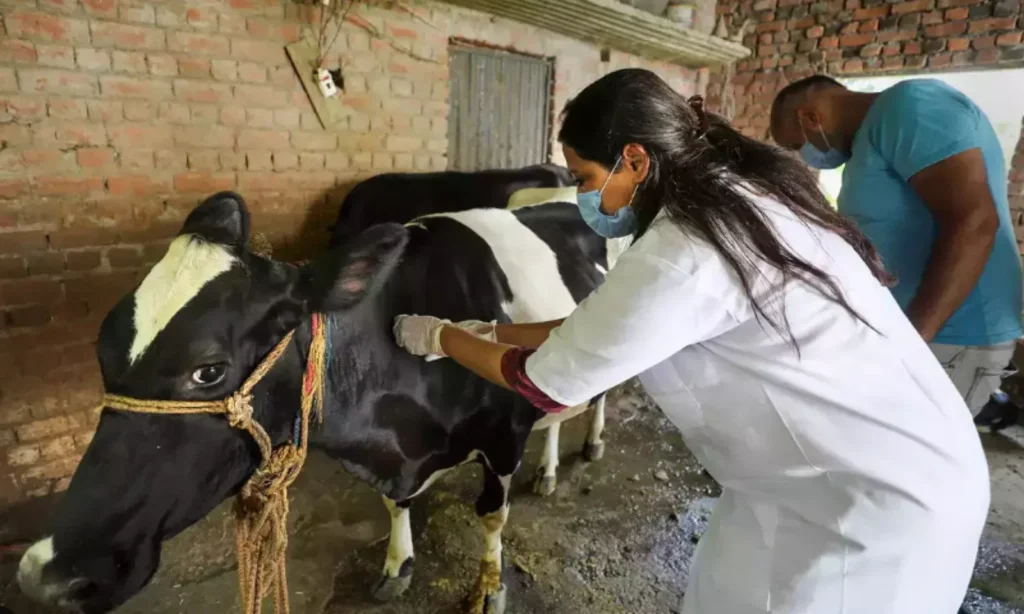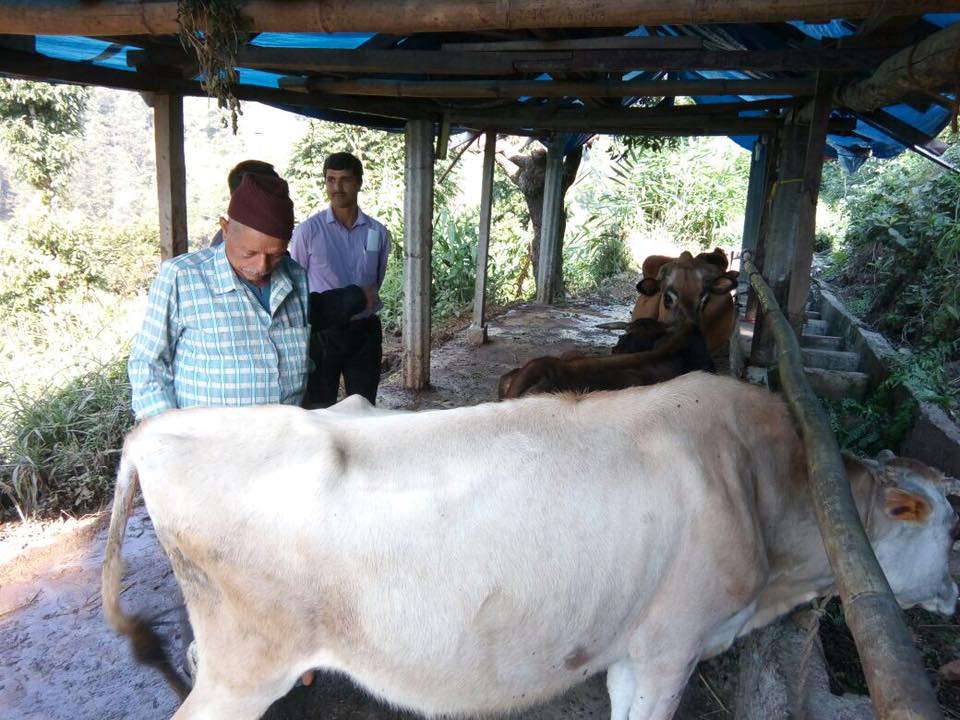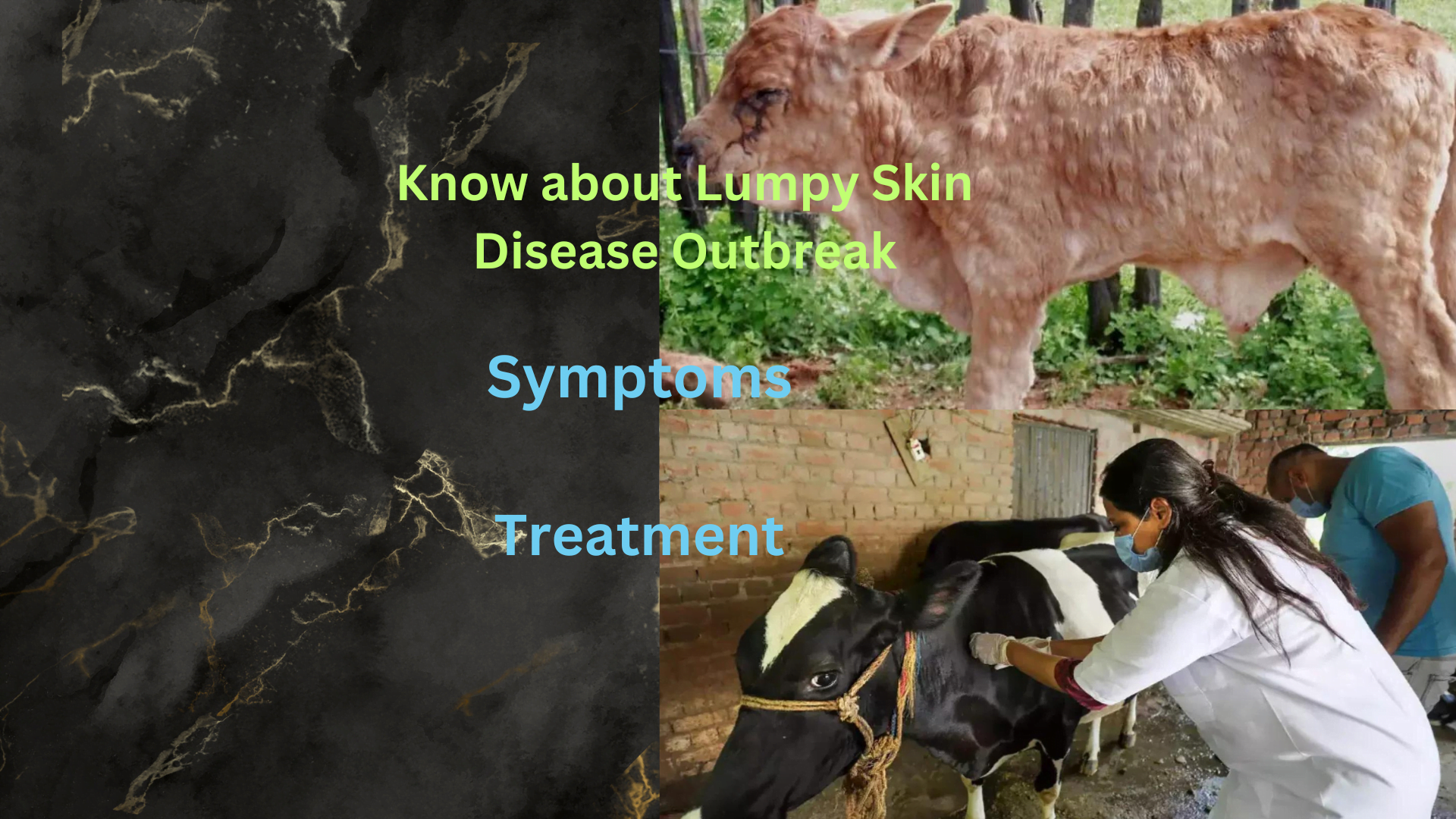What is Lumpy Virus (Lumpy Skin Disease)?
Lumpy Virus or Lumpy Skin Disease, commonly known as LSD, is an ailment that affects animals, primarily cows and water buffaloes. This disease is brought about by a virus named the Lumpy Skin Disease Virus (LSDV), related to the family of poxviridae viruses.

Table of Contents
Symptoms of Lumpy Virus (Lumpy Skin Disease)
Lumpy Skin Disease (LSD) is named after its most visible symptom – lumps that appear on the skin of infected animals. These swellings, ranging from 2-5 cm in diameter, show up primarily on the animal’s head, neck, limbs, udder, genital areas, and around the rear. These lumps can eventually turn into ulcers and then develop into scabs.
Other Symptoms of LSD
Apart from skin lumps, there are other signs to watch out for in LSD-affected cattle. These include high fever, a significant drop in milk production, discharge from the eyes and nose, excessive saliva, and a loss of appetite. Infected animals may also appear depressed, their hides may be damaged, and they may become thin or weak. In some cases, infertility and abortions have also been observed.
Incubation Period of LSD
The time from when an animal is infected to when symptoms start showing is known as the incubation period. For LSD, the Food and Agriculture Organization (FAO) reports this period to be about 28 days. However, some sources suggest a shorter period of 4 to 14 days.
The Relation Between LSDV, Sheeppox, and Goatpox Viruses
The LSDV virus shares certain characteristics with two other viruses – the Sheeppox Virus (SPPV) and the Goatpox Virus (GTPV). Specifically, it provokes similar immune responses in the host animal.
Transmission of Lumpy Skin Disease
This disease is not transmittable to humans. Rather, it spreads from one animal to another through various vectors or carriers such as mosquitoes, certain types of flies, and ticks.
How Do Animals Get Infected?
According to the Food and Agriculture Organisation of the United Nations (FAO), animals infected with LSDV can spread the virus via their oral and nasal fluids. When these fluids come into contact with shared resources like feeding and watering areas, they can contaminate them, thereby aiding the spread of the disease.
Direct Contact vs. Indirect Contact
LSD can be spread through direct contact with infected animals or vectors, or indirectly via contaminated food and water. Therefore, it’s essential to ensure cleanliness and regular disinfection in areas where animals eat and drink.
Other Means of Transmission
Further studies indicate that LSD can also be transmitted through the semen of infected animals during artificial insemination. Hence, rigorous screening and careful handling during these procedures are necessary to prevent the spread of LSD.
By understanding these basics about Lumpy Skin Disease, we can take informed steps towards preventing its spread and ensuring the health of our livestock.
Is Milk from Infected Cattle Safe to Drink?

One common question is whether milk from cattle infected with Lumpy Skin Disease is safe for consumption. The answer is yes. The current scientific consensus shows that the LSDV virus cannot survive in the milk from the infected animals.
Milk Processing and Safety
Particularly in regions like Asia, milk undergoes several processes after it is collected. These can include pasteurisation, boiling, or drying to make milk powder. These steps work to inactivate or completely destroy any potential virus that might be present.
Expert Opinions on Milk Safety
Notably, a high-ranking official at the Indian Veterinary Research Institute (IVRI) stated that milk from LSD infected cattle is safe for human consumption.
“Milk from infected cattle is safe to drink. The quality of milk remains the same whether you boil it or not,” says Mr. Mohanty. This reassurance comes from the fact that Lumpy Skin Disease is non-zoonotic, meaning it doesn’t transfer from animals to humans.
Lumpy Virus’s (LSD) Impact on Sikkim’s Livestock
Lumpy Skin Disease (LSD) has significantly affected Sikkim’s livestock population. To date, almost 5,000 cases have been confirmed, with 1,727 currently active. The disease has claimed the lives of 323 animals, equating to a 6.5% mortality rate.
Geographical Spread and Relief Efforts
Namchi district bears the brunt of the disease with 848 cases, followed by Pakyong, Gangtok, Soreng, Gyalshing, and Mangan. Chief Minister PS Golay has announced compensation for farmers who lost their cattle, and a proposal is in the works.
Disease Management Measures
In response to the LSD outbreak, the state has implemented Standard Operating Procedures, declared “Control areas,” and rolled out a substantial vaccination campaign, with almost 40% of the livestock vaccinated.
Sikkim’s Animal Husbandry Secretary, Dr. Senthil Kumar, stressed the importance of cleanliness and minimizing movement in affected areas to control the disease spread. At present, the recovery rate for infected livestock is hovering at 58%.
Public Reassurance and Further Measures
Dr. Senthil reassured the public about the safety of dairy products from infected cattle, urged prompt reporting of any disease symptoms, and provided a dedicated helpline for assistance. The state has banned cattle entry from other states as a preventive measure.
This comprehensive approach aims to manage the current outbreak and prevent further spread of the Lumpy Virus (LSD).
What are the starting symptoms of lumpy virus?
Lumpy Skin Disease is marked by symptoms like fever, decreased milk output, and skin bumps. It can also cause inflammation of the udder, swelling of lymph nodes near the skin, loss of appetite, increased mucus from the nose, and watery eyes.
What is the survival rate of lumpy virus?
Lumpy Skin Disease (LSD) is a contagious virus affecting cows, leading to fever and skin lumps. It can also be fatal, with the Food and Agriculture Organization (FAO) noting a 10% death rate in cattle struck by LSD.
What is the best treatment for lumpy virus?
The best treatment for Lumpy Skin Disease (LSD) currently involves symptomatic management, such as wound care, pain management, and administering antibiotics to prevent secondary bacterial infections. However, the most effective approach is prevention through vaccination and control of biting insects that spread the disease.
Is lumpy skin disease cow milk good or bad?
The Joint Director at the Indian Veterinary Research Institute (IVRI) has confirmed that it’s safe to drink milk from cows infected with Lumpy Skin Disease.. This is because the disease does not transmit from animals to humans.

